By Grant Tinsley
After years of exercising in commercial or university gyms, I decided to start developing a home gym in May 2017, less than a month before the arrival of my first child.
From May 2017 to November 2021, the home gym occupied space in my garage. I gradually accumulated equipment, primarily from Facebook marketplace, and the gym reached a respectable state.
In 2021, we moved to a new home on an acre of land and began construction on a 1,750-ft2 shop in the backyard. In November 2021, the shop was finished, and the gym officially had a new home.
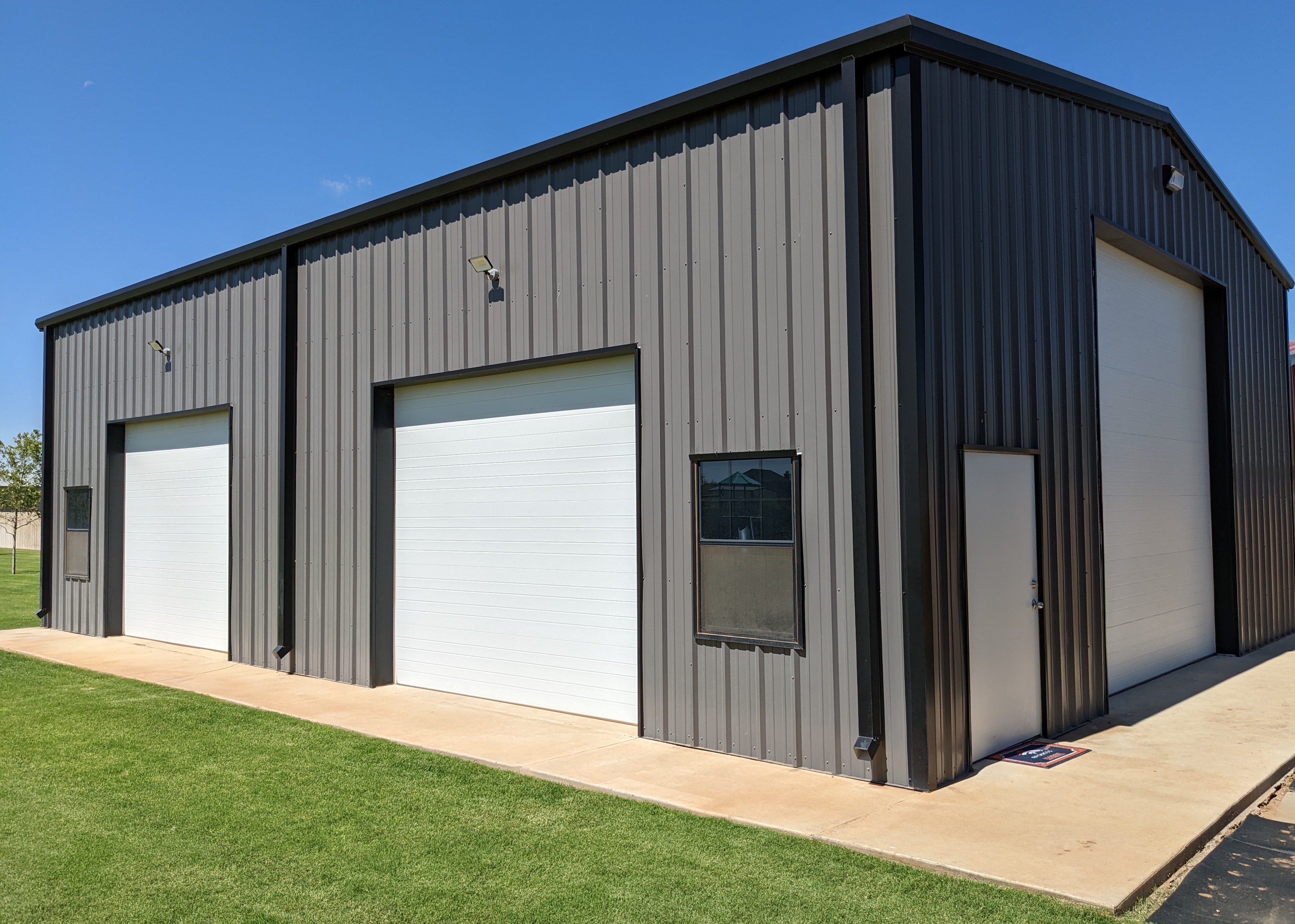
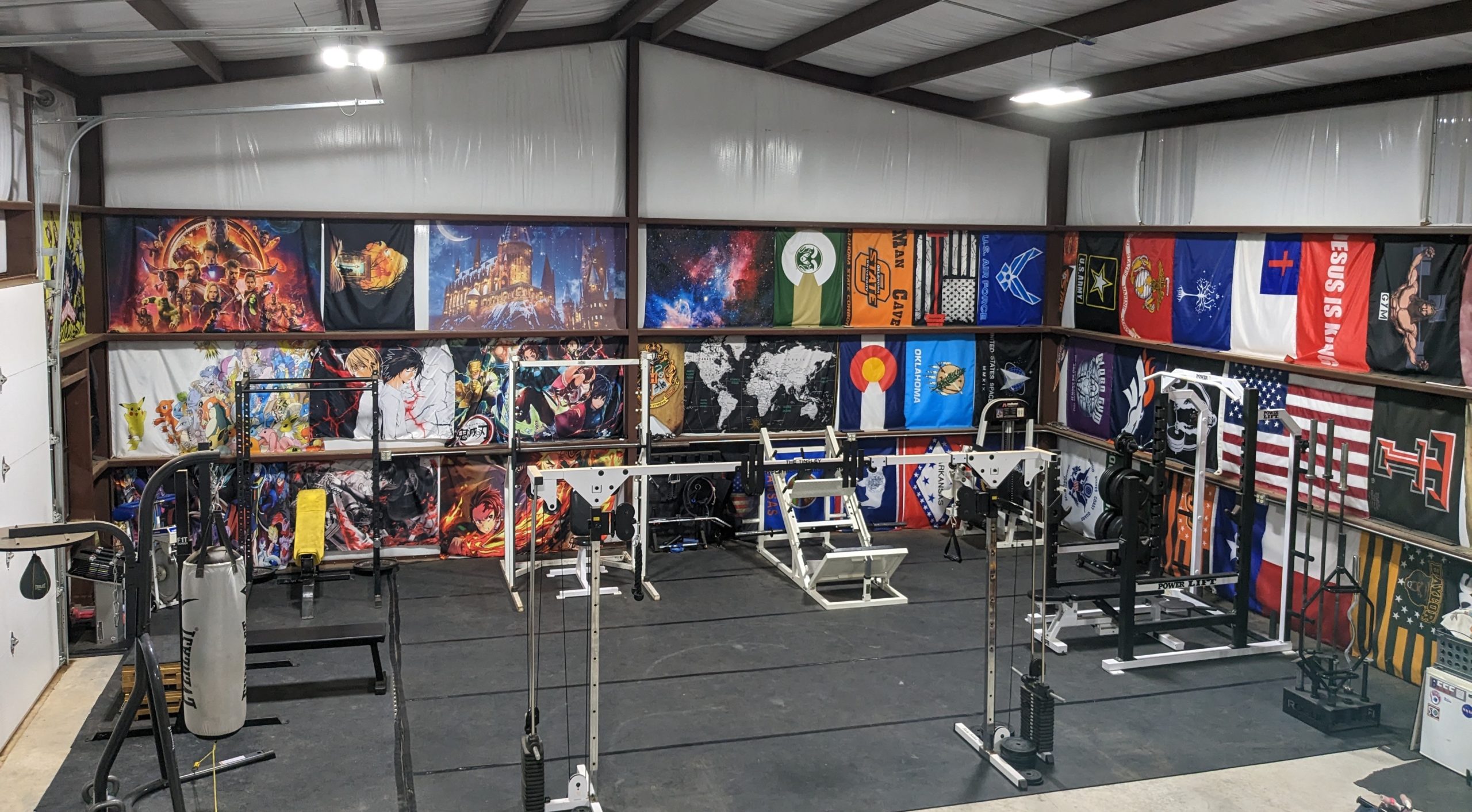
Table of Contents
The Gym Through the Years
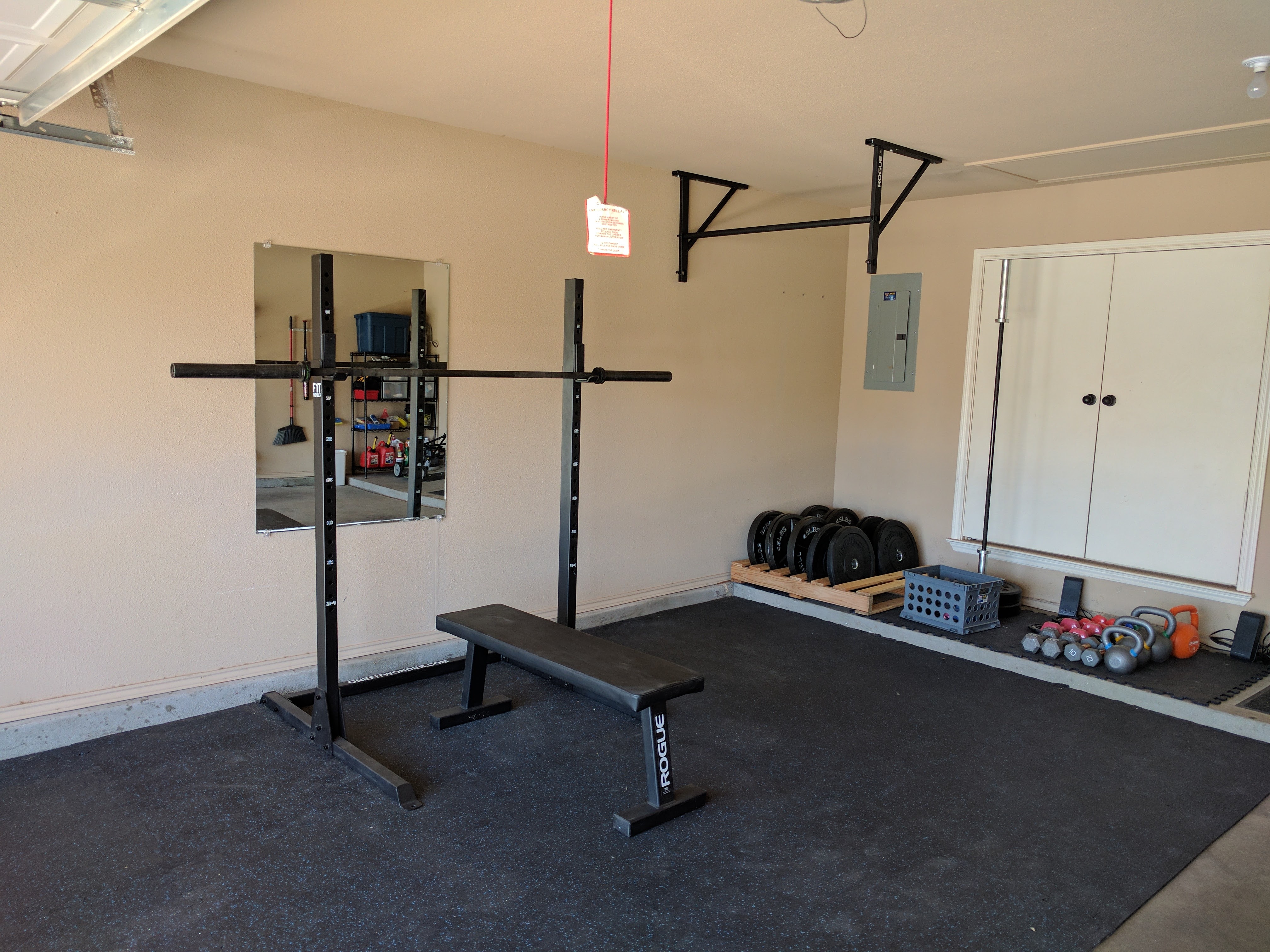
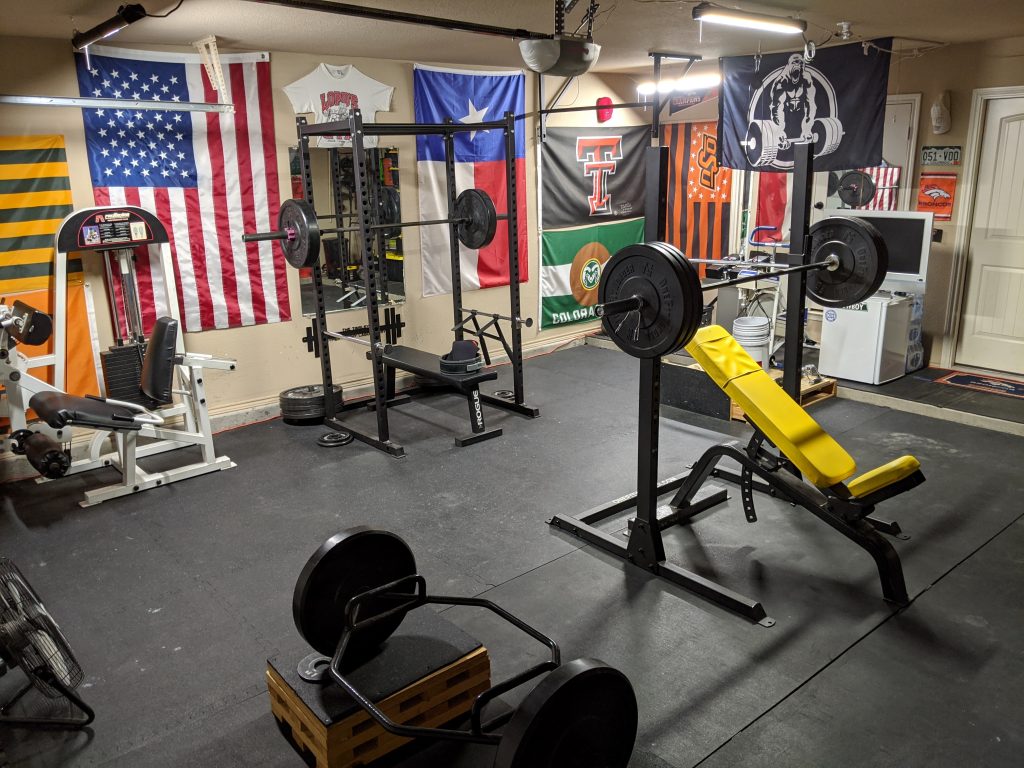

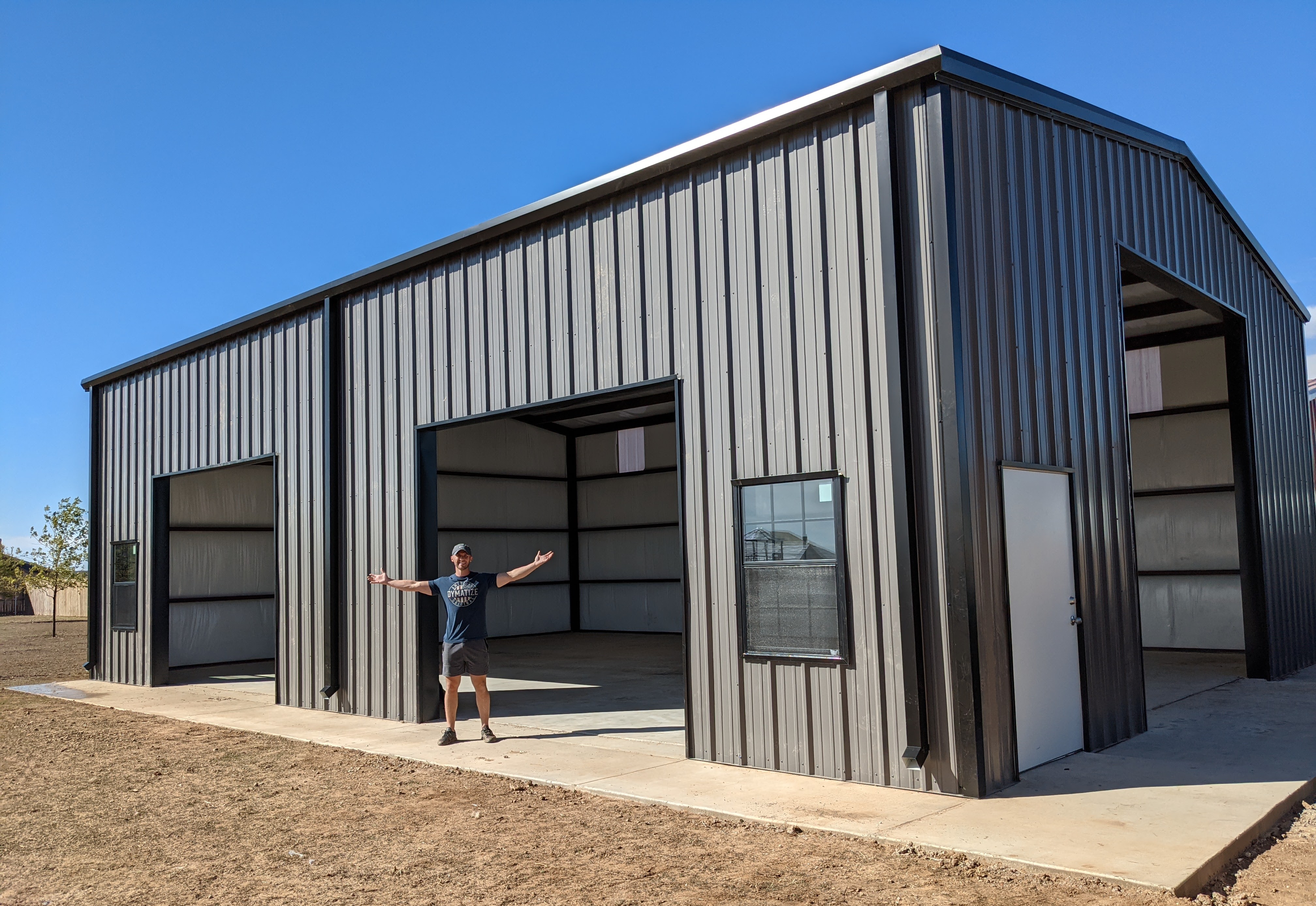


Background
Before I share an overview of the development of the home gym, here is a bit of background for context:
- My preferred training style is a mix of powerlifting and bodybuilding. I like to train the major multi-joint movements in somewhat of a powerlifting fashion, but all of my accessory work looks pretty much like a gym bro’s. These training style preferences impacted several of my decisions along the way.
- While lifting is one of my favorite things to do, it is just a hobby for me. I mention this because it affects what I am interested in spending time and money on. My garage gym setup has been plenty adequate for my preferences and goals, but some may find it lacking some essential items for theirs.
- I wasn’t the person who always knew I wanted a home gym. Although I first starting “working out” at home during middle school, I was elated when I was allowed to join a commercial gym around my 16th birthday. Don’t tell anyone, but the gym was none other than Planet Fitness in Overland Park, Kansas. Maybe they were different back then, but this one actually had free-weight barbells!
- Since that time, I have always enjoyed the traditional gym environment. Similar to studying at the library as opposed to on the couch at home, there was something about the accountability of having nameless strangers around me that drove me to push myself. Of course there were times I lamented the busyness, waiting for equipment, etc., but being “fed up” with traditional gyms was not my motivation for leaving them.
- After about a decade of lifting in university and community gyms, the busyness of life caused me to seriously consider developing a home gym. At this time, I was finishing my first year on the tenure-track at an R1 university and was weeks away from the birth of my first child.
Disclaimer: I put some Amazon affiliate links on this page because I will link to a few items I own and recommend. Per Amazon, I must state “As an Amazon Associate I earn from qualifying purchases.”
The Garage Gym (2017 – 2021)
First Steps
Although the idea of a home gym had been gradually evolving in my mind, I wanted to be in a house before I officially started one. My wife and I had also paid up front for a yearlong membership at a commercial gym and didn’t really want to pay the penalty for breaking this.
When we bought our house in February 2017, I began to keep my ears open in case I should stumble upon any used exercise equipment to get the gym started.
A few months later, in May 2017, I spoke to a friend who had bought some equipment for his CrossFit-style home gym. Although the items were less than a year old and in great condition, he was interested in unloading them. I took a look at his setup and felt it was a nice package to get me started.
I paid $1,100 for the initial purchase of two barbells, a squat stand, a bench, bumper plates, a pull up bar, flooring, kettlebells, and a few light dumbbells.

While I was happy to get quite a few items in one fell swoop, I knew there would be several items I needed to add ASAP. The most pressing need, of course, was having enough weight for squatting and deadlifting. For this, I found some good deals online for iron plates, as well as some cheap adjustable dumbbells (that I later regretted and upgraded).
I also made some DIY additions, including a basic pulley system and blocks to use for block pulls, step-ups, a seat when I’m being lazy between sets, and a place to set my phone and drink (you know – the important stuff).
For the blocks, I purchased a bunch of 2×4’s and a few thick sheets of plywood. I had each of these cut to the desired dimensions at Home Depot since I only owned a handsaw. Other than that, this addition just needed a ton of screws and a solid cordless drill.
For those who may want to build something like this, the wood that was needed for the blocks included:
- 16 2×4’s cut to ~17″ in length (8 per box)
- 12 2×4’s cut to ~24″ in length (6 per box)
- 4 sheets of 3/4″ plywood cut to ~17″ x ~24″ (2 per box)
As the handy people will know, the actual dimensions of a 2×4 are 1.5″ x 3.5″. The term “2×4” is somewhat of an artifact.
Anyway, the final dimensions of each box were: 24″ long x 17″ wide x 8″ deep. Because I had some extra flooring pieces, I topped each box with rubber. This isn’t strictly necessary, but it is nice for function and aesthetics.

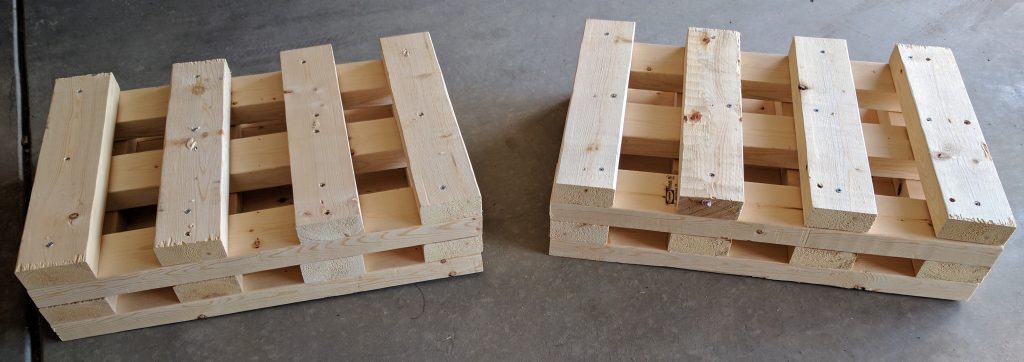


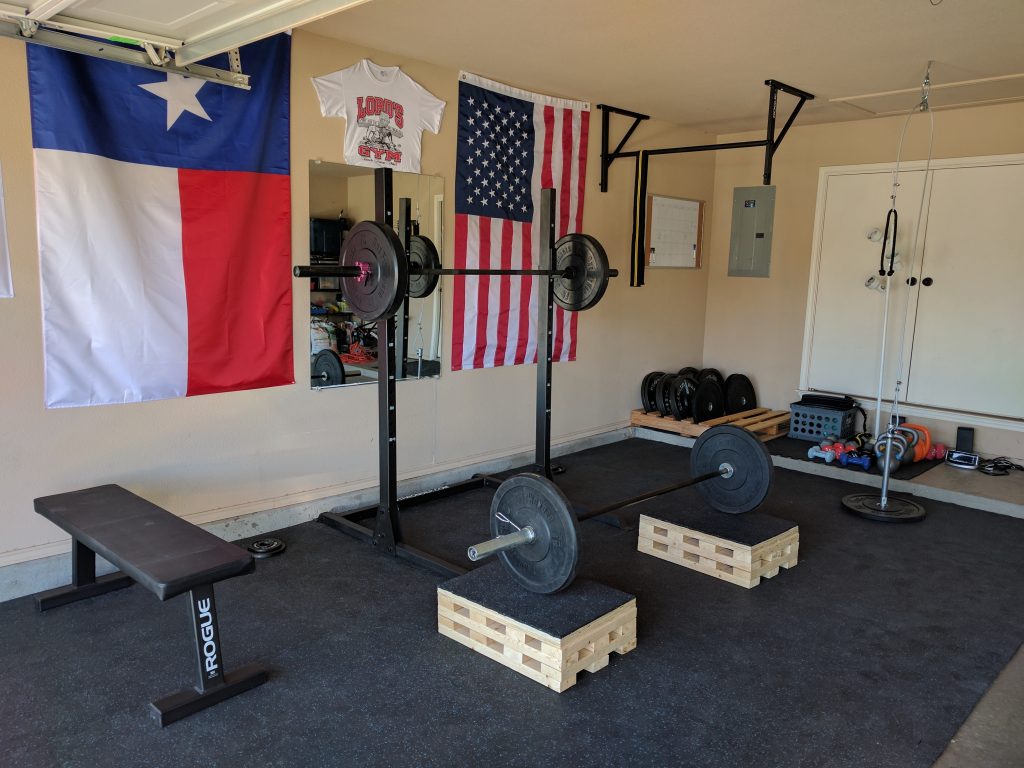
Beyond the Bare Necessities
Although the garage gym was in decent shape at this point, I wanted to continue to improve it.
The items that helped me do this, purchased over the course of about two years, were:
- Additional flooring for the second half of the garage
- A (fairly cheap) power rack
- An adjustable incline bench
- A leg extension/curl machine
- PowerBlock Elite Series adjustable dumbbells
- A hex/trap bar
I purchased several rolls of durable rubber flooring from a CrossFit box that was closing. Up to this point, although we could pull out the car for some extra space, the additional floor space was just plain concrete. The additional rubber flooring still allowed us to park a car in the garage but made the gym much nicer when we pulled the car out. However, these rolls of flooring aren’t as sturdy as the rubber flooring on the other side of the garage.
The addition of the power rack did wonders for my confidence when squatting and benching alone, thanks to the safety bars. The multiple pull up bars (narrow and thick) and dip attachments are very handy too. While it was later surpassed by a commercial quality Power Lift rack, this rack still has a home in the gym.
The adjustable incline bench (<$50) and leg extension/curl machine (~$100) were steals. I found both of them, along with the PowerBlock dumbbells, on Facebook marketplace.

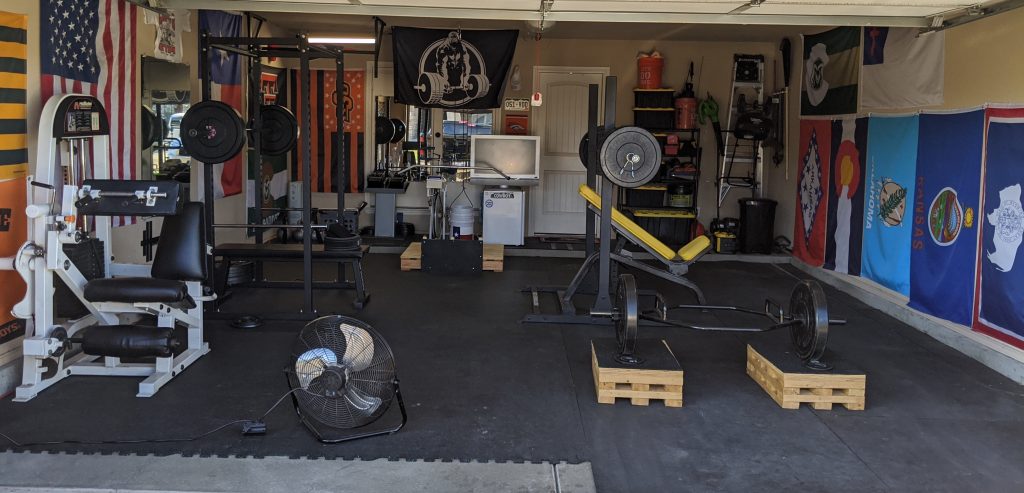
Up to this point, the total cost of the garage gym was a little over $3,000, as shown below.
| CATEGORY | AMOUNT |
| Barbells, Dumbbells, Weight Plates, and Kettlebells | $1,460 |
| Racks, Benches, and Pull Up Systems | $745 |
| Flooring, Lights, Fan, Heater, Insulation | $477 |
| DIY Additions | $200 |
| Machines & Cardio | $117 |
| Miscellaneous | $120 |
| GRAND TOTAL | $3,119 |
Of course, there are non-financial considerations for home gyms. But, purely from a financial perspective, here is how things stacked up in my case:
During our first year in Lubbock, my wife and I paid for a yearlong membership at a commercial gym. Even with a discount for paying in full ahead of time, this was ~$750 total for the two of us.
So, for a financial comparison, we broke even on the home gym after about 4 years of use. This is based on a simple comparison of the gym equipment cost vs. the membership cost and isn’t considering other items, such as gas used for driving to the gym, etc. Also, this is specific to the commercial gym we were using, and some gyms could be cheaper or more expensive.
Additionally, an important consideration is that membership at a gym is just like paying rent at an apartment. You get to live there, but you will own nothing when you are done paying. So, even when we got to the “break even” point financially, the financial advantage goes to the home gym since we owned all the equipment. In recent years, used gym equipment has retained its value quite well.
With all that said, the short- to medium-term financial benefit of the home gym became more questionable when we moved to our second house and built a metal building to house the gym.
The Shop Gym (2021 – present)
Since moving to West Texas, I always wanted a house with a little bit of “elbow room” that would allow for a separate shop/gym. In January 2021, my family and I moved to 1.07 acres of glorious space. As this was a new build, I marked off the spot in the backyard for the eventual shop/gym.
I spent several months planning, designing using resources like Mueller, Inc.’s 3D Design Tool, and gathering quotes for the shop. Finally, it was time to move forward in summer 2021.
I settled on a 1,750-ft2 shop (50’x35′) with additional concrete walkways on two sides. Additionally, I selected a sidewall height of 16 feet and a 3/12 pitch, meaning the peak of the shop is a little over 20 feet above the slab.
Thanks to our security cameras, I have some nice time lapse footage of the shop construction:
Even though I only use about half of it for the home gym, I had some extra space after moving into the shop. So, I kept an eye on Facebook marketplace and found some good deals on commercial equipment, particularly a professional Power Lift rack and bench ($1000 – actually a great deal for this), a hip sled / hack squat machine ($250), and a cable system ($700).

While I occasionally add new equipment to the gym, the rate of spending has decreased substantially now that the gym is equipped with pretty much everything I want.
The shop itself was, of course, reasonably expensive. However, the shop increased the value of our property and also serves many other uses beyond the gym. (My family spends a lot of time in here!) Nonetheless, the financial cost/benefit calculations become quite a bit more complicated with the shop. I won’t guess at those here, but I am optimistic that the combination of increased property value, the actual utility of the shop, and the (hopefully) decades of use make this a wise decision in the long run.
Why I Love Having a Home Gym
There are plenty of reasons why I love having a home gym:
- The gym is open 24/7/365
- Zero commute time
- Great flexibility
- Perfect for when you have to squeeze short workouts into a busy schedule
- I think it would have been incredibly difficult to keep up a consistent exercise regimen over the last few years without a home gym due to a busy tenure-track job, three young children, time with wife and friends, normal adult and homeowner activities, etc.
- The ability to continue to exercise regardless of external factors (I’m thinking of COVID lockdowns here)
- Great way to teach exercises to family and friends
- You can use all the equipment simultaneously, stick to exact rest times more easily, etc.
- For some, easier to not get interrupted or distracted
- Being able to offer the gym as an amenity to any visitors staying with you
- I hate trying to figure out where I will exercise during travel, and I am glad visitors to our home don’t have to worry about that.
- A HUGE one for me: spending time with family and friends.
- This environment lets me display an active, health-promoting lifestyle to my children at an early age.My kids have each been in the garage gym with me since they were only weeks old. They have each spent hundreds of hours with me in the gym, getting to explore and play.This setting was perfect for my wife as she modified her exercise regimen during pregnancy and transitioned back into lifting during the postpartum period. It was easy for her to do short, modified workouts in the comfort of our own home and without the hassle of “going out.”
- My wife and I will often exercise together while the kids are napping or after their bedtime. We just keep the video monitor in the garage with us and can pop inside if any issues arise.
- Ultimately, without the gym at home, I would probably either miss out on a substantial amount of quality time with my family or “fall off the wagon” with my exercise regimen.
Is a Home Gym Right For Everyone?
No (of course). There are several reasons not to have one. Here are a few I can think of:
- You just don’t want to
- The up-front cost to get an adequate setup may be prohibitive
- It may feel inappropriate given your current living situation (some apartments, etc.)
- You don’t have the space for the gym
- The environmental conditions where you live may be more challenging
- You prefer the commercial gym environment
- You want the motivation or accountability benefits of a normal gym environment
- You want to make new friends at the gym
- You don’t want to accumulate this much “stuff”
Recommended Items
Here are some items I have purchased myself and recommend. However, as noted several times in this article, my best finds have been from Facebook marketplace. So, I definitely recommend checking there first. Transportation of equipment can be a challenge for some vehicles. I used my pickup truck to transport all the items I purchased, except for a few that were kindly delivered by the sellers.
- Heavy-duty Rubber Flooring: IncStores 8mm Strong Rubber Tiles
- Squat Rack: Rep Fitness Power Rack PR-1000 with dual pull up bars and dip attachment.
- Bumper Plates for Barbell: Fringe Sport / OneFitWonder package of 10 lb/15 lb/ 25 lb/35 lb/45 lb/55 lb plates (this version has more weight increments than mine)
- Iron Plates: I found these on sale at Walmart.com ($26 for each 45-pound plate – a great deal!). For cheap iron plates, I recommend browsing around to try to find a good sale.
- Adjustable Dumbbells: POWERBLOCK Elite EXP Adjustable Dumbbell.
- Basic Cable/Pulley System: SERTT LAT and Lift Pulley System Gym.
- Cable Attachments:
- Flat Bench: Titan Fitness Flat Weight Bench.
- Flags: You can find flags for just about anything on Amazon!
Final Thoughts
While a home gym isn’t for everyone, I have immensely enjoyed having a gym in my garage for the last several years. Whether or not you are seriously considering getting a setup like this, I hope that some of the information on this page was useful, informative, or entertaining.